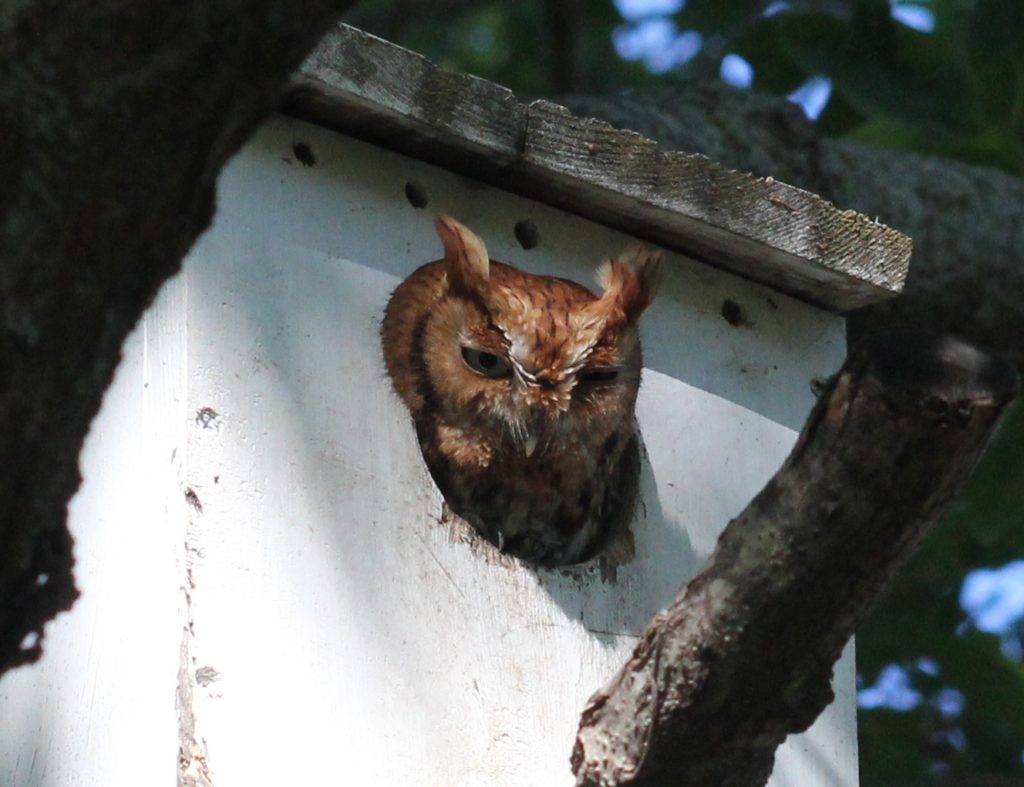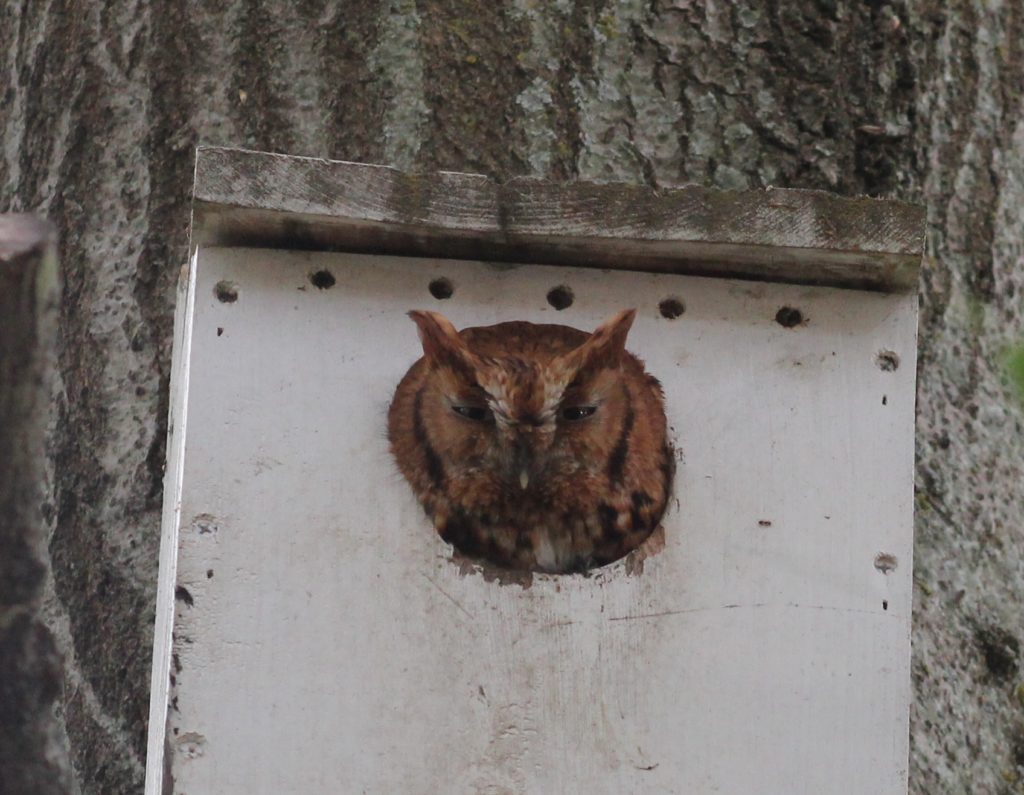Today was downright cool for mid-April in North Texas. It did get up to 82, but a lot of the day was much chillier than that.
Sometime about 10:30 in the morning, I noticed our owl was sticking its head out of the box again, so grabbed a camera with a slightly longer lens and went to see if I could catch a good shot in better lighting than the shots we had hastily grabbed at dusk.

A brisk breeze blew and ruffled the backyard Oak. The owl’s “ear” tufts caught the wind too. Those points on the top, looking so much like very functional cats’ ears, are not an owl’s true ears. They are simply handsome feather tufts, with the real hearing aparatus being little channels in the side of the head, covered over with feathers. Their real ears aren’t even symmetric, which aids the owls in detecting and locating the tiniest sounds of moving prey.
He (or she—still don’t really know) was pretty mellow today and sat quietly staring me down as I spoke softly and shot a few photos. We make it a habit to speak to the owl, or to ourselves, every time we’re in the yard so the owl will know our voices and not worry about our presence. He shut one eye at a time today, letting me know he trusts me enough not to keep both eyes open and on me.

Eventually, I went back in to try a different camera setup, but when I returned a minute later, the owl had disappeared. Whether it flew away to hunt or just ducked back into the box I didn’t know.
Later, about 6:40, I heard a sound that caught my attention. It’s the kind of sound designed to catch attention, a Robin sounding an alarm call. I’m no Dr. Doolittle, but I’ve grown up watching animals and listening to birds, and with very little effort you can hear the difference between ordinary Robin sounds and a Robin trying really hard to get everyone’s attention. This particular Robin hangs out in the yard much of the day with a nest nearby, and happens to scream a lot just around dusk. It’s been doing that for more than a week, so I had figured the bird’s complaints were probably related to our owls.
Since it was still an hour and a half before dark, I thought the timing was odd but stuck my head out to see what the fuss was. Birds will sound alarms for cats, snakes and anything else they find threatening. Birds of different species can interpret those alarm calls and will all perk up and pay attention to a mutual threat, sometimes even banding together to pester an enemy into retreat.
Just as I closed the door behind me, another Robin came sailing into the yard hot on the tail of our owl, who made a beeline for the box and dove in without pausing. It all happened so fast I couldn’t see if the owl was carrying anything—mostly a blur of high speed rusty red feathers.
Once the owl was in the box, the whole neighborhood of birds turned up to scold and worry. One Bluejay, two Robins, one Mockingbird, one Chickadee and even one pair of Eastern Bluebirds (seldom seen in our yard) showed up to chastise the owl and tell each other to “Watch out!” Over the years, I’ve found it useful to listen to what the birds are trying to tell each other. Sometimes a mixed mob of birds will point out an interesting snake I would have missed, or sometimes a stray cat or other potential threat to their nests.
Our owl, though petite, sweet, and adorable to us, is a fierce and merciless predator to them—definitely on the Robins’ bad list this week.